

For years we've loved mezcal, one of the true treasures of Oaxaca, but we've always had more questions than answers about what it is, and where it comes from. So this year we decided to grab a few empty gas cans, pick a town in mezcal country, and go get the story.
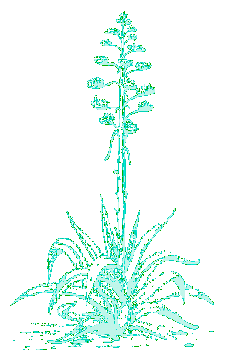
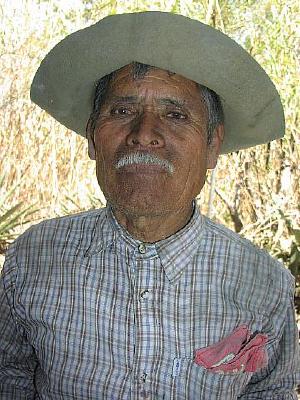
|
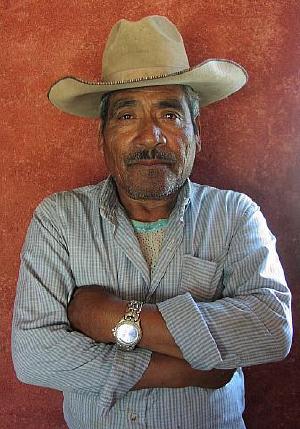
|

|
We bought 5 gallons of his very fine mezcal, and as luck would have it, his brother Panuncio Bohorquez, lived just down the road and we got a second tour, the answers to a few more questions, and another sip or two. His mezcal was strong and delicious and we bought 5 liters. Our next stop was a slightly larger palenque about 3 detours and ten dusty kilometers down the road. We chose this one because there seemed to be more people walking around the buildings and we hoped to get some pictures of the "batch" being made.
It turned out to be a party and we were invited. We met Maurilio Vasques, his son Dimtrio, and grandson Raulito. These kind and friendly folks filled in a last few unanswered questions and sold us 5 gallons of terrific mezcal. We asked our guides at all three palenques a barrage of questions about both the plant, and the process, and this is what they had to say.
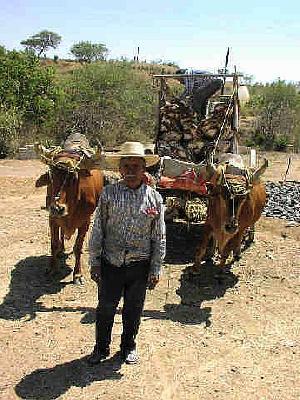
|
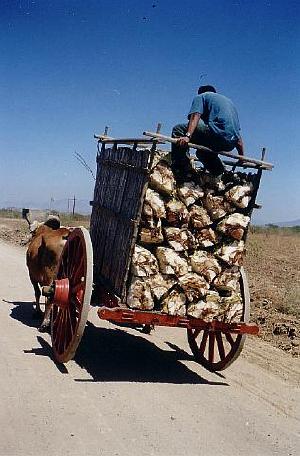
|

|

|
The ancestors of today's mescaleros used to be pulqueros, producers of pulque, a beer-type fermentation of the plant. The process for distilling high-alcohol content spirits was brought to México by the Spanish and by the 1800's both mezcal and tequila were being produced in large quantities.
The process for making mezcal, and its "cousin" tequila, is identical. If you want to make tequila, you use the blue agave; to make mezcal, you use the maguey. This process has remained largely unchanged to this day. The science is fairly simple; the work is extremely hard. All things are said to have a season and the season for mezcal starts in late March and runs until it's too hot to work and the maguey gets overripe.
The horno, or oven, is a conical hole in the ground about 6 meters wide and three meters deep which is loaded with a mixture of maguey bulbs, burning coals, and pieces of round volcanic stone. The mixture is covered and left to cook for 6 to 12 hours. As the hot roasted cores are removed from the oven, they are literally dripping with sugar which has been released from the heart of the plant.
The next step of the process uses a simple but very functional rolling mill made from a large stone wheel with a center hole, fitted with a well-greased wooden axle. This axle is fastened to a rotating center pole, to guide the stone in its endless circle. An ox is tethered to the axle and pulls the stone wheel round and round as the roasted cores are thrown in and crushed into a sweet pulpy mass.
The pulp is collected and placed in a large, (6-foot tall by 3-foot
wide) wooden vat and mixed with a liberal amount of water. This mix,
depending on variables such as temperature and sugar content, will need
from 4 to 8 days to produce a startling amount of alcohol.
Be Still, My Heart
A still as in "distill", is used to separate the alcohol from the pulp. A still has two sides, one very hot, the other very cool. The hot side consists of a large copper kettle, with a close fitting lid that tapers to a tube at its top, This kettle is set in stone or concrete and has a fire pit beneath. The cool side is a stone or concrete tank of water with a spring shaped coil of copper tubing inside. The entrance to the coil is above water. The exit goes through the water and out a spigot at the bottom.
The hot and cool sides are about 6 feet apart and connected by a copper pipe, top of lid to top of coil, making a closed tube from kettle to spigot. The kettle is filled with fermented mash from the vat and brought to a boil. The alcohol turns to steam and passes from the hot side to the cool side through the connecting pipe, cools in the coil, and comes out of the spigot as mezcal.
The last question we asked all our mezcaleros was what we should be looking for to find a great mezcal. They all said, it should taste good. When asked to be a little more specific, they said "las perlas". These "pearls" are actually small bubbles which form on the surface of the mezcal as it is poured into a glass. The more pearls the better.
Clarity was mentioned. Pure mezcal is crystal clear and colorless. An exception is make for the mezcal which has been aged, añejo or madurado, or reposada, "rested". This aged mezcal takes on a much smoother finish, and a lovely light gold color. We found great mezcal everywhere we went.
There's also the famous gusano mezcal, with the tasty worm in the
bottle, mezcal con chili (with chili pepper), and cremas de mezcal,
liqueurs of mezcal which are infused with various fruits and flavorings,
that were introduced in the 1950's. Mezcal country is a great trip,
especially this time of year when the harvesting and production are at a
peak, and there are dozens of little towns like San Luis Amatlan to
visit. Ask around, pick a town, and bring it back alive. Salud!